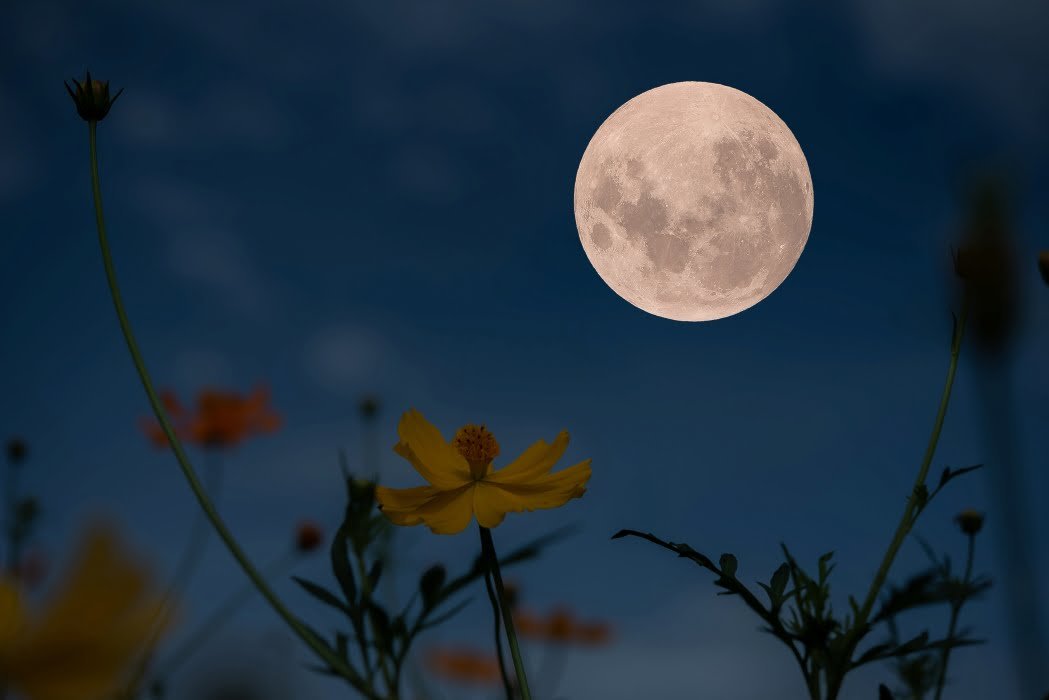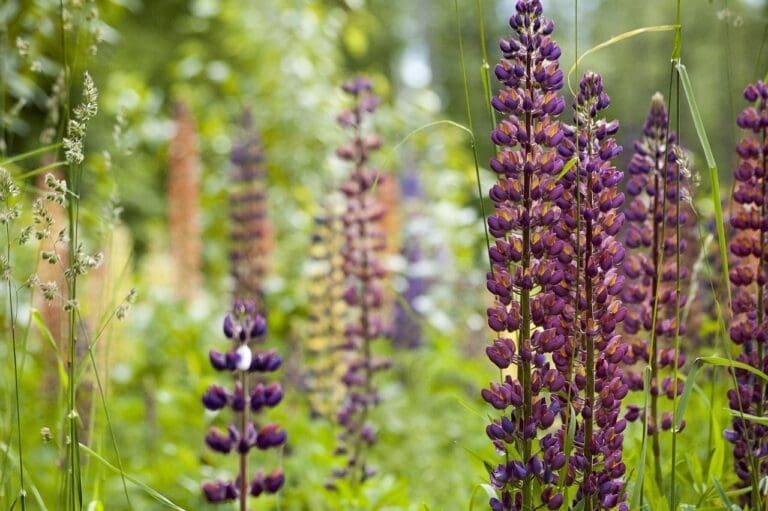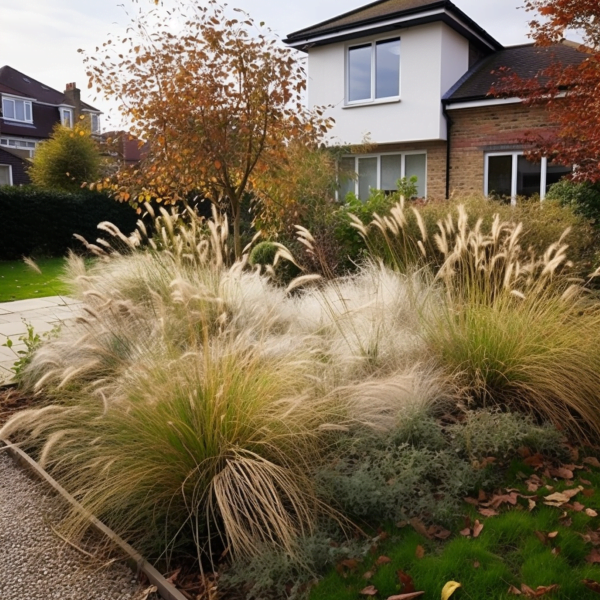A moon garden, simply put, is a night-time delight. It’s a garden filled with light-coloured flowers, night-blooming plants, aromatic herbs, and silver-leafed foliage that all come together to be enjoyed under the moonlight.
Add a touch of soft garden lighting, peaceful features for relaxation, and the occasional visit from nocturnal wildlife, and you’ve got yourself a tranquil evening retreat.
Let’s dive in to see how you can create your own.
Top Tip
When planning your moon garden, strike a balance between soft artificial lighting and the natural glow of the moonlight to highlight your garden’s features without obscuring the enchanting beauty of the night sky.
This post contains affiliate links which means we may make commission from any qualifying sales with no extra cost to yourself.
Key Features of a Moon Garden
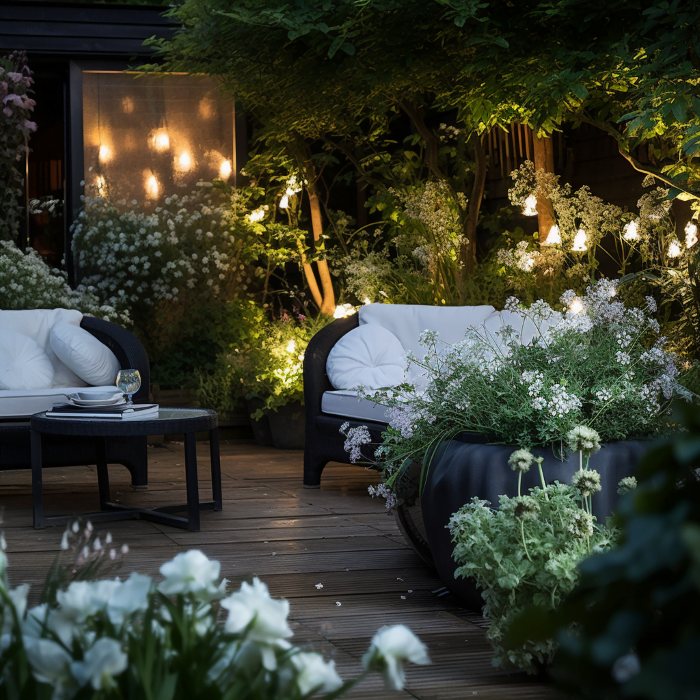
- Light / White Coloured Flowers
- Night-Blooming Plants
- Fragrant Plants
- Silver or Variegated Foliage
- Soft Garden Lighting
- Relaxing Features
- Nocturnal Wildlife
Selecting the Right Plants
Crafting a captivating moon garden involves careful selection of plants that offer visual beauty, fragrance, and a penchant for showing off under the night sky. Let’s explore each category in more detail.
Light-Coloured Flowers
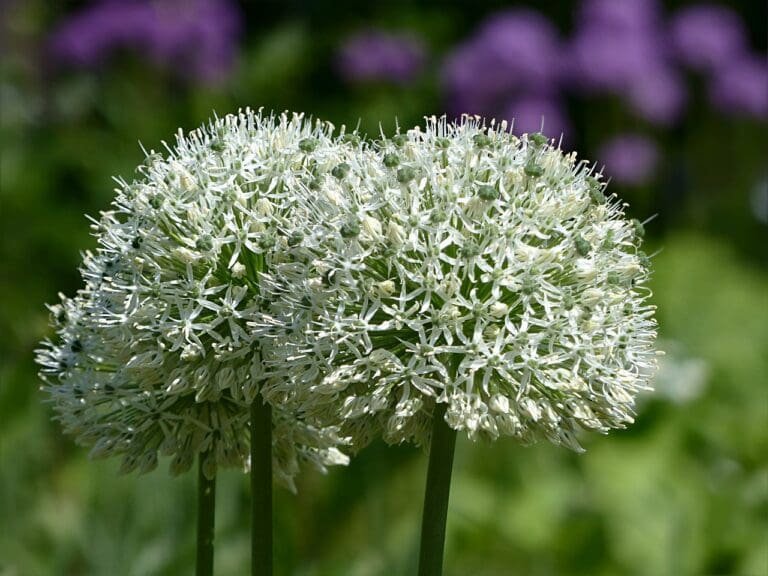
Moon gardens primarily feature plants with white or light-coloured blooms that reflect the moonlight, giving the garden its characteristic glow. For instance, the common Daisy (Bellis perennis) with its classic white petals, or the Bishop’s Flower (Ammi majus) with its delicate white lace-like flowers, both serve as great choices for UK gardens.
Other examples include white varieties of roses, such as ‘Iceberg‘ or ‘Winchester Cathedral,’ and the ‘Mount Everest’ Allium with its showy white sphere of flowers.
Night-Blooming Plants
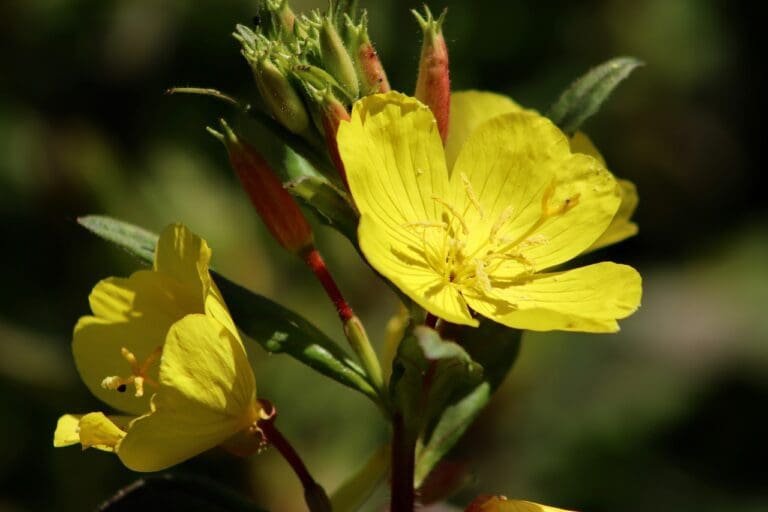
Night-blooming plants are another key aspect of a moon garden, as they tend to open their blooms as evening falls. The Evening Primrose (Oenothera biennis) is a popular choice, opening its yellow flowers from late afternoon to early morning.
The Nodding Catchfly (Silene nutans) offers clusters of nodding white flowers that open in the evening and close by noon. The white Campion (Silene latifolia) is another UK-native night bloomer, with white flowers that open in the late afternoon to evening.
Fragrant Plants
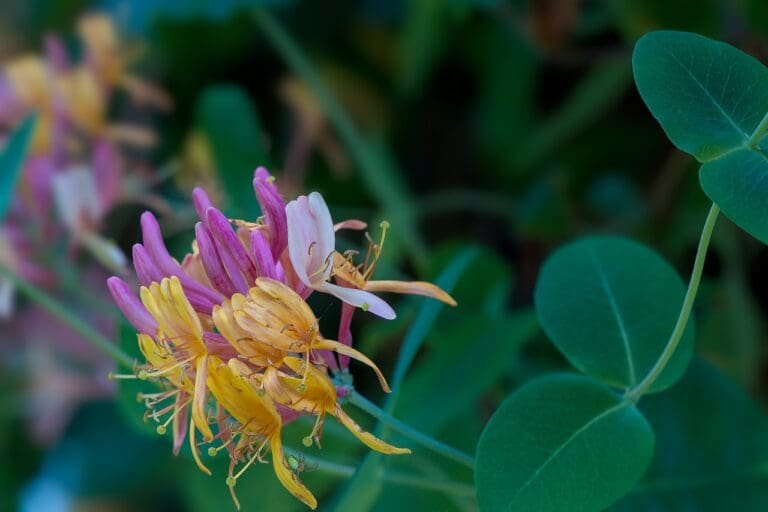
To add an extra sensory layer to your moon garden, consider fragrant plants. Many emit their intoxicating scents as the sun sets.
Plants like the Night-scented Stock (Matthiola longipetala) fill the night air with a sweet aroma. Other examples include the Night Phlox (Zaluzianskya ovata), known for its powerful, honey-like scent at night, and the Honeysuckle (Lonicera periclymenum), which releases a sweet, strong fragrance in the evening.
Light-Coloured, Silvery Foliage Plants
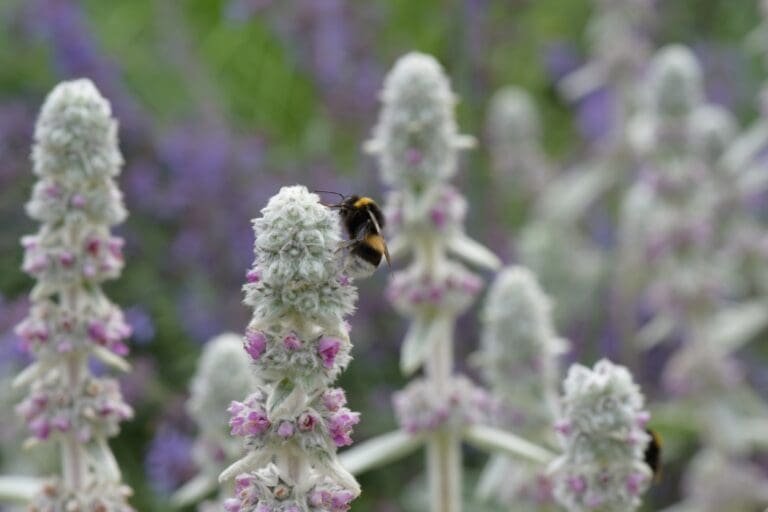
In addition to flowers, plants with light-coloured or silvery foliage play a vital role in a moon garden. They help to reflect the moonlight and create a luminous landscape even when flowers are not in bloom.
Silver-leaved plants like Artemisia ludoviciana ‘Silver Queen’ and Stachys byzantina (Lamb’s Ears) bring a soft, fuzzy texture and a bright, silvery appearance to your garden. Their foliage shimmers under the moonlight, providing an interesting contrast to the dark night.
Dusty Miller (Senecio cineraria), with its lacy, silver-gray leaves, can also be a fantastic addition. It not only stands out at night but also provides a beautiful backdrop for your night-blooming flowers.
Variegated plants like Miscanthus sinensis ‘Variegatus’ or Hosta ‘Patriot’ bring a mix of light and dark foliage to your garden. Their light-coloured areas capture the moonlight, while the dark areas offer a stunning contrast.
These plants not only stand out under the moonlight but also bring a unique texture and depth to your moon garden during the day. Remember to position them where they can best capture the moonlight, such as along paths or near seating areas.
Remember, the plants you select should align with the specific conditions of your garden, such as sunlight, soil type, and local climate. Mix and match from these categories to create a multi-sensory, glowing display that you can enjoy on moonlit nights.
Designing Your Moon Garden
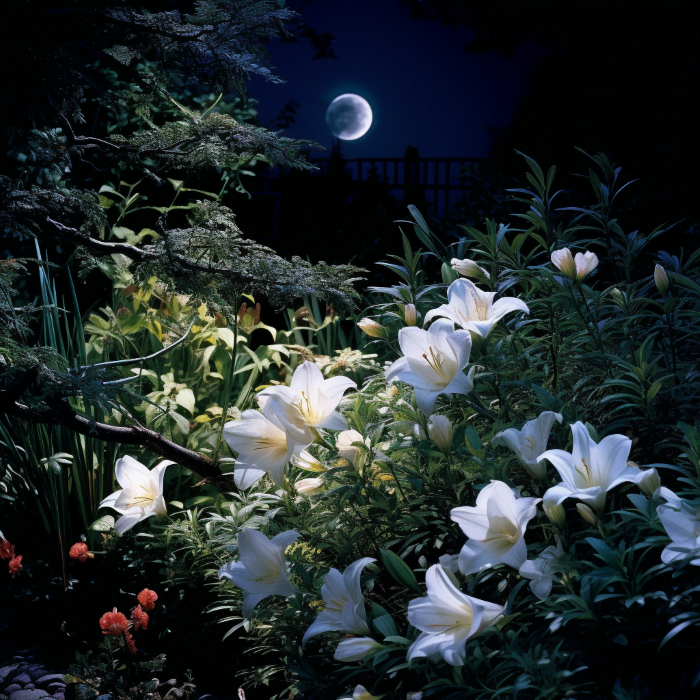
A well-planned layout plays a significant role in your moon garden’s allure. Play with different textures and plant heights for visual interest. Tall plants like Silver Birch trees can provide a dramatic backdrop, while lower plants like Silver Mound Artemisia add variety.
Consider creating focal points with sculptures or a garden bench, and consider pathways lined with light-reflecting plants for an enchanting stroll.
Attracting Wildlife to Your Moon Garden
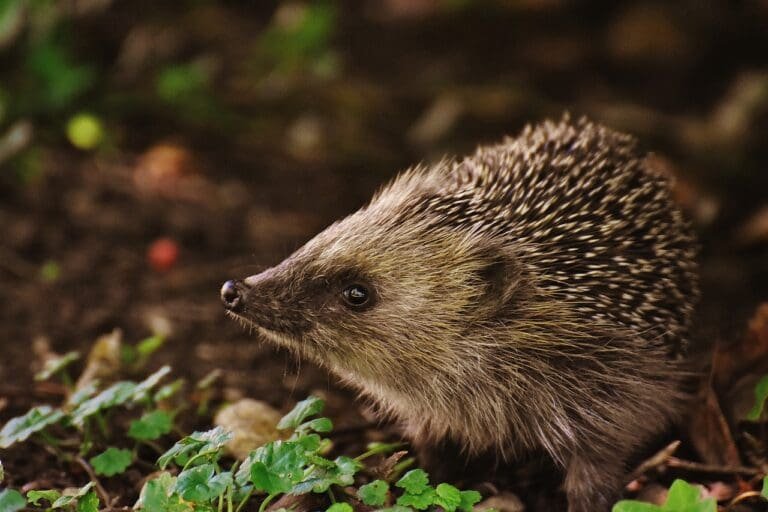
One of the most captivating aspects of a moon garden is the potential to attract a host of nocturnal wildlife, turning your garden into a vibrant ecosystem even after sunset.
Nocturnal insects like moths are naturally drawn to the moon garden. The luminescent white and light-coloured blooms are a beacon in the night, attracting these winged visitors. To further encourage their visit, consider installing an insect hotel – a simple structure with a variety of materials that provide shelter for these beneficial creatures.
Bats, too, are an essential part of the night-time landscape, and they’re great for pest control! Bat boxes installed high up in your garden provide these winged mammals a safe place to roost and can increase their visits to your moon garden.
Let’s not forget the enchanting presence of owls. Owl boxes, similar to bat boxes, offer a home for these magnificent birds. Owls not only add a sense of wonder to your garden but also keep rodent populations in check.
Lastly, if you have the space and are in an area frequented by hedgehogs, creating hedgehog-friendly corners can invite these delightful creatures into your garden. A simple hedgehog house, along with access to food and water, can be a lifesaver for these prickly pals.
Attracting wildlife does more than just bringing your moon garden to life. It contributes to local biodiversity, supports various species, and offers you the enchanting experience of witnessing the night-time habits of these fascinating creatures. So, why not add a bit of wildness to your moon garden and see how it transforms?
Moon Garden Lighting
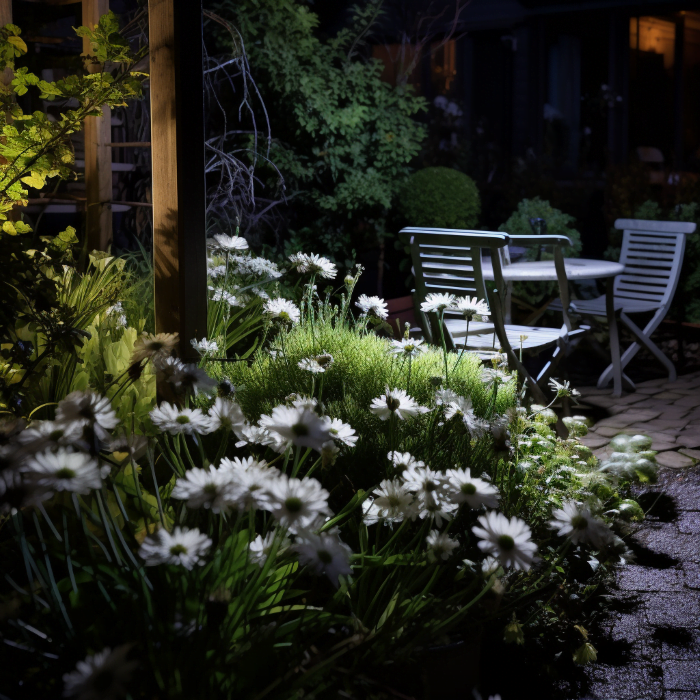
The right lighting is the secret sauce that can take your moon garden from beautiful to downright enchanting. But remember, the goal is to accentuate the moonlit magic, not overshadow it.
Opt for soft, gentle lighting options like solar-powered lights, whimsical fairy lights, or the warm flicker of rustic candles. These will softly illuminate your garden, allowing your plants to shimmer against the night sky.
But here’s the crucial part: be careful not to go overboard. Too much artificial light can disrupt the gentle, serene atmosphere of your moonlit retreat, and importantly, it can dim the glory of the night sky. After all, your moon garden is a celebration of the night, and the stars above are part of that spectacle.
So, think balance and subtlety when it comes to lighting. The aim is to delicately highlight your garden’s features, enhancing their natural glow rather than creating a stage spotlight. This way, you’ll maintain a peaceful ambiance and keep the splendour of the star-studded sky undisturbed.
Final thoughts
Creating a moon garden is all about carefully selecting suitable plants, creating an appealing layout, adding sensory elements, and incorporating soft lighting. With regular upkeep, your moon garden will transform your evenings into tranquil moments of serene beauty.
Why not start on your moon garden today? And as you embark on this magical journey, don’t forget to share your experiences with fellow moon garden enthusiasts. Your tranquil, moonlit haven awaits!
Frequently Asked Questions
Q: What colour are moon gardens?
Moon gardens typically feature a palette of whites, silvers, and other light colours that can reflect the moonlight well. This includes white or light-coloured flowers, plants with silver or variegated foliage, and often, light-coloured garden elements like pathways, benches, or statues. However, this doesn’t mean you can’t have plants with darker foliage or flowers. They can provide a nice contrast and depth to your garden.
Q: What flowers open to the moon?
Certain flowers, known as night bloomers, open their petals as the sun sets and the moon rises. In the UK, some popular moon garden flowers include Evening Primrose (Oenothera biennis) and Nottingham Catchfly (Silene nutans). These plants not only reveal their beauty under the moonlight but often emit intoxicating fragrances, adding another layer of enjoyment to your moon garden.
Q: What flower smells at night?
Several flowers are known for their strong night-time fragrance, meant to attract nocturnal pollinators. For instance, Night-scented Stocks (Matthiola longipetala) and Night-scented Jasmine (Cestrum nocturnum) release their captivating scents after dusk. These aromatic blooms make strolling through your moon garden a sensory delight.
Q: Are moon gardens hard to create?
Creating a moon garden doesn’t have to be any more challenging than a regular garden. It mainly requires careful selection of plants that have white or light-coloured blooms, variegated or silver foliage, and, if possible, night-time fragrances. Like any garden, it will need regular maintenance such as watering, fertilising, and pruning. With a little planning and regular care, anyone can create a beautiful moon garden to enjoy on clear, moonlit nights.

